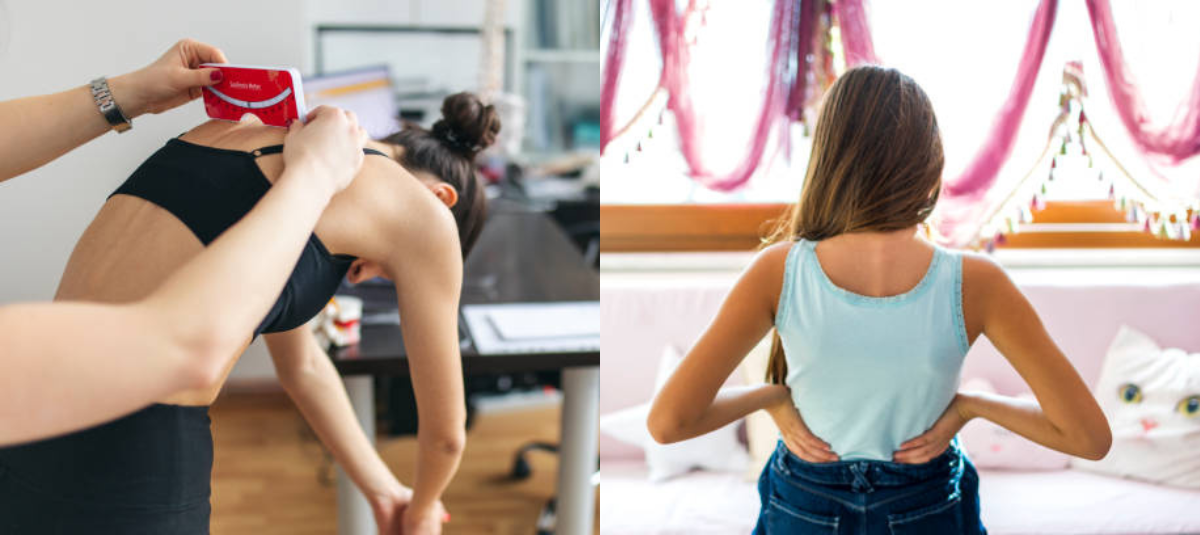Retiree took morphine daily for back pain and couldn't walk after surgery: now she hikes

This is their experience. Photo: Social media.
For more than six years, retiree Dilma Baptista dos Santos, 65, of São Paulo, Brazil, relied on morphine to cope with intense pain caused by severe scoliosis.
This condition, which distorted his spine, was diagnosed when he was 20, although at that time the curvature was mild and didn't interfere with his daily life. However, over the years, the deformity progressed to 50 degrees by the time Santos was 48.
In an attempt to avoid surgery, Santos stayed active by practicing Pilates, aquagym, and physical therapy. She also consulted numerous specialists looking for alternatives. Treatment with opioids reduced her pain level from 8 to 4. Despite this, surgery became inevitable in 2016.
READ ALSO

On July 11, 2016, Santos entered the operating room for a complex 14-hour operation. During the procedure, while attempting to correct the kyphosis, the neurosurgeon triggered a shock in the area known as the cauda equina—composed of nerve roots at the base of the spinal cord—causing loss of movement in his legs.
“The doctor told me I was at risk of becoming wheelchair-bound after the surgery. But without it, I would have gone anyway,” Santos recalls. After the procedure, he returned home in a wheelchair and needed assistance even for basic tasks like going to the bathroom.
The X-ray shows what the spine looked like after surgery. Photo: Courtesy of O GLOBO
One month after surgery, he began a rehabilitation process that included 85 days of hospitalization at the AACD in São Paulo and up to 18 physical therapy sessions per week.
The exercises began to show results: "I started supporting myself against the walls of the room and taking my first steps on my own, without hiding from the nurses. Before they knew it, I was already walking," she says. She was initially discharged with a cane, but six months later she no longer needed it.
READ ALSO

Despite the after-effects, such as constant tingling in her feet and a loss of sensation in her left knee, which causes instability, Santos didn't stop. In 2018, she discovered athletics races and has already participated in 15. "I walk because I'm afraid of running and tripping. But I bought a knee brace and I'm going to give it a try. I'm really looking forward to running," she says.
Santos on one of the trails he hiked. Photo: Social media.
She also practices weight training and Pilates, and recently started circus classes, where she climbs on fabrics and performs aerial exercises. During a trip to Finland, she discovered her passion for hiking and has since completed three trails.
READ ALSO

After all this experience, Santos decided to retire. She took several hobby courses, created a social project to distribute winter supplies to the homeless, and resumed her volunteer work at the GRAACC.
Among her next goals are hang gliding and skydiving. “I believe in the law of attraction, but there’s no point in sitting on the couch waiting. You’re the one who has to make it happen,” she says.
Scoliosis is a deformity that causes the spine to develop an "S" or "C" curve when viewed from the front or back. According to orthopedist Alexandre Fogaça of the AACD Orthopedic Hospital, idiopathic scoliosis is the most common and usually appears in adolescence, accounting for around 80% of cases and being more common in girls.
Other types include congenital scoliosis, caused by birth defects; neuromuscular scoliosis, associated with conditions such as cerebral palsy or muscular dystrophy; and degenerative scoliosis, which affects older adults due to natural wear and tear of the spine, osteoarthritis, or osteoporosis.
Severe spinal curvature can affect the respiratory system if not treated promptly. Photo: iStock
According to the World Health Organization (WHO), between 2% and 3% of the world's population suffers from some degree of scoliosis. Early detection is key to preventing the deformity from progressing. When the curve exceeds 45 or 50 degrees, surgery is recommended to correct the deformity , align the spine, and slow its progression, using rods, screws, and bone grafts.
If surgery is not necessary, treatment is conservative, with physical therapy, muscle strengthening, and, in some cases, the use of orthopedic braces. Although there are no proven methods to prevent idiopathic scoliosis, early diagnosis and proper follow-up allow for effective treatment, and regular physical activity helps maintain spinal health.
*This content was rewritten with the assistance of artificial intelligence, based on information from O Globo (GDA), and reviewed by the journalist and an editor.
Follow all the Culture news on Facebook and X , or in our weekly newsletter .
eltiempo





